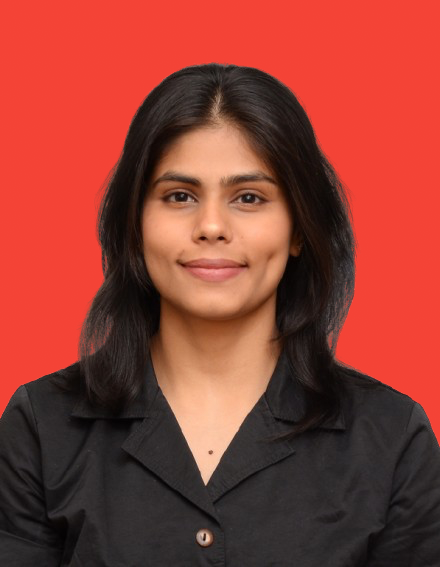March 6, 2024
.jpg?width=400&height=150&name=IMG_3200%20(1).jpg) by Nick Telson-Sillett / March 6, 2024
by Nick Telson-Sillett / March 6, 2024

Ask most sales representatives what makes a company successful. You'll get as many answers as there are reps.
Some swear by their tools, while others think experience or training makes the difference. Ultimately, their answers tend to veer toward self-congratulations. Sales teams make a company successful. Everything else simply equips them for the task.
What if I was to tell you we've got it all backward? That it's the buyer, not the seller, that determines the sale? Amidst all the fancy sales tools and training, enabling the buyer genuinely makes all the difference.
Gone are the days of in-person sales meetings and traveling from customer to customer to close a deal. When remote work expanded due to the COVID-19 pandemic, what was left of the buyer journey shifted online.
But with an impersonal digital experience filling the void, how do sales teams build a customer relationship? We can no longer force the buyer’s hand to the dotted line.
Today, these decisions take place away from a sales team's influence. Only by enabling our buyers, answering their questions, and providing the relevant resources can we close deals. That's the promise of buyer enablement.
Familiar with the buyer journey? It's a common sales tool that lays out the buyer's transition from identifying their problem to purchasing a product or service to solve it. It traditionally involves these three stages:
What moves a B2B buyer from one stage to the next? Unlike their B2C counterparts, B2B buyers don't make snap judgments because they can’t. Instead, they have to be rational, bottom-line-minded, and methodical. It's answers to questions that drive the B2B buyer's journey.
Traditional interactions, like face-to-face meetings and real-time phone calls, gave buyers time to ask questions and receive answers. Sellers didn't need complicated tools or endless training – just a friendly, trustworthy demeanor and solid knowledge about their product or service.
As we've moved to modern asynchronous communication, we've lost both parts of the equation. Without the human element, customer-seller interactions fail to build relationships or answer customer questions. Little wonder B2B buyers take longer and pore over any piece of information they receive.
There are a couple of benefits: asynchronous buyer journeys give our potential clients the time to digest information, compare options, and consult with team members without the pressure of an immediate response.
The problem for us sales reps is if we rely on a single point of contact, a.k.a. single threading, we can find ourselves constantly emailing or annoying one person who passes along the message to the nameless, faceless internal team. It's frustrating! Multi-threading refers to engaging multiple stakeholders on your lead’s buying team. It prevents the bottlenecking that occurs with a single point of contact, and in an asynchronous buyer journey, the two teams can communicate regardless of time and location constraints.
Buyer enablement is a new sales technique that prioritizes supporting the buyer with tools, resources, and data to steer a deal forward to the close. Unlike sales enablement, the sales team plays a supporting role in the buyer's experience. It's not the seller who closes the deal through quick wits and hard sells. Instead, the ideal interaction in buyer enablement is a seller who preempts every buyer question, supplying the answer before it’s asked and speeding up the journey.

Marketing news brewed fresh every week just for you. Subscribe here
Once upon a time, we didn't need the term "buyer enablement." Excellent sellers intrinsically knew not to force a sale. The harder they pushed, the further they pushed the buyer away. So the sellers finessed the buyer to make them think the sale was their own idea, not the rep’s. To achieve that, the best sellers had all the answers.
As the physical and metaphorical distance between buyers and sellers grew, sales teams sought tools and coaching to recapture this former relationship. At its worst, it attempted to build a generation of "super sellers" so persuasive and brilliant that they could convince anyone anywhere to buy a product. But for the most part, sales enablement was simply buyer enablement by another name.
of sellers said their role was becoming more consultative and less transactional than before.
Source: Salesforce
Sales reps are expected to have a profound knowledge of their product or service, the customer, and the market. Since 58% of sellers said they found virtual selling harder than in-person selling, it's unsurprising they'd invest in retooling and training themselves. No one wants to feel out of their depth.
The solution isn't to resign ourselves to the impersonal, inhuman digital sales landscape, but to embrace a new form of personalization. This idea is critical to buyer enablement. Sellers must learn how they're best placed to help by figuring out who the buyer is, what they want, and where their pain points are. Moreover, using this information, sellers can supply the right information in the right format to the buyer. Nor is this just a nicety – B2B buyers expect it.
of B2B buyers expect vendors to personalize engagement to their needs. And yet, only 27% of B2B companies excel at delivering this experience.
Source: Salesforce
Buyers are sick and tired of being treated like a number; they don't want to spend days sifting through business content, looking for answers. They're the customer!
Indeed, 78% of B2B buyers want salespeople to act like trusted advisors. Sure, they’re looking for raw numbers and bottom-line benefits, but they're not robots. Buyers want to build relationships with people who hear them, see them, and treat them like a person.
We begin to find the solution to all this in a concept called “sense-making.” In buyer enablement, it's the antidote to information overload. Sellers help customers sift through data, understand their needs more thoroughly, and make informed decisions.
Often, the "champion" buyer isn't an expert in an area. They're beginning the journey and learning as they go. That's a disorientating process when trudging through a blizzard of online content. Sense-making clears the path.
That's not to say companies should do away with their digital content. However, their content creation should always align with their in-person efforts. One should lead to the other and back again.
For example, digital methods are convenient, they provide a wealth of information, and they brilliantly introduce customers to new subjects. But they're cookie-cutter, devoid of personalized guidance.
On the other hand, in-person interactions clarify and contextualize what a customer has learned. They're also a fact-finding opportunity for you and your team to see what makes a B2B buyer tick.
Together, these channels make certain B2B buyers receive consistent, accurate information curated by sales teams, who work hard to understand the buyer in every call and interaction.
Chief Sales Officers (CSOs) work like the conductor in this process. Responsible for tailoring an orchestra of customer engagement strategies and aligning sales processes, they train sales reps in consultative selling techniques, emphasizing empathy, active listening, and problem-solving. What you get at the end is a beautiful symphony,
It's easy for sales teams to slip into introspection, worrying about what they need to do. The CSO reminds sales teams that their efforts are guided by their buyer knowledge. They cannot force a buyer through the buyer journey, but they can offer support at every step.
The buyer journey is a learning process. B2B buyers start by not knowing anything about a problem and then gradually develop their understanding until they identify a possible solution. To proceed, they ask questions and look for answers.
Confused by the sheer quantity of information and with many unanswered questions B2B buyers want sellers to guide them with authority. That helps build company trust, and it speeds up the buyer journey.
So, we see that a successful buyer enablement strategy achieves two things: it informs buyers and it guides buyers.
To achieve the first objective, sales teams must generate a content catalog of valuable sales materials. That ranges from basic introductory guides to in-depth product or service analyses. Once they make that, the sales reps have to supply the right content to the right buyer at the right time.
Sales materials need to do more than just persuade; they inform, educate, and align with the buyer's current stage in the journey. Supplying this information convinces a B2B buyer why your product or service is the only viable solution.
Let’s summarize these key strategies:
Marketing teams are instrumental in framing and affirming your solution's value throughout the buyer journey. They're responsible for developing a personalized narrative about the product or service that resonates with the buyer's situation.
An excellent marketing team doesn’t just talk about a product or service's general benefits. They relate those benefits to a company's current problems based on their pain points. Helping companies understand how a product or service benefits them in a context they understand goes a long way to closing the deal.
Integrating marketing and sales efforts smoothes out the experience for the buyer. No longer are they spending months sifting through information, reading endless reports, and struggling to identify a solution.
Instead, the sales team listens to the buyer's problems and supplies salient information. They then pass the buyer's data (needs, pain points, requirements) to the marketing team, who tailor and contextualize the content to the buyer's needs. The goal is to enable buyers to make informed decisions that lead to a successful sale.
According to McKinsey, over 60% of B2B sales interactions occur digitally. More than three-quarters of buyers and sellers prefer digital self-serve and remote human engagement over face-to-face meetings. Anyone wishing for a return to old-fashioned sales culture is dreaming.
That said, B2B buyers still require human interaction – digital or otherwise. Tools like video and live chat found their place during COVID-19 lockdowns, replacing in-person meetings. Video conferencing, for instance, saw a 41% increase.
Building a buyer journey that's predominately content-based punctuated by these human interactions, is the perfect hybrid approach. Buyers in the B2B sphere increasingly favor digital interactions for convenience and speed – especially during the early stages of the buyer journey. However, they value human interactions for complex discussions, problem-solving, and building trust as they make sense of their situation.
B2B companies should see the early digital interactions as a chance to gather buyer data. Through AI-driven chatbots, personalized digital sales rooms, and CRM software, sellers have the means to apply the data they collect to customize their human interactions and sales strategies. It's not either/or. It's about strategically integrating both approaches to complement each other.
Part of the problem is scaling. If a B2B company has thousands of leads, how do they personalize these individual buyer experiences? It's impossible!
Or it was until automation, AI-driven insights, customer databases, and tailored platforms solved most of the difficulties for sales teams.
Take trumpet, for example. Our digital sales rooms integrate seamlessly with prominent CRM platforms. Customer data auto-personalizes the microsite by welcoming customers with their names and displaying content related to their pain points and questions.
Beginning early in the buyer journey, the digital sales room is a space for buyer-seller interactions. Sellers adjust the available content to the buying stage, gradually increasing the specificity and complexity of the information. Through mutual action plans, live chat, webinars, and other communication features, sellers can build relationships and become the trustworthy guide B2B buyers want without overshadowing the learning process.
Plus, as B2B buyers interact with the digital salesroom, every action is tracked. Sellers can analyze where buyers are in the journey to make sure they provide the right information at the right time.
The benefits are clear – trumpet’s 5,000+ users see an average 40% reduction in sales cycle times from outreach to close. Why? Because it fulfills everything the research tells us B2B buyers want.
Still believe that digital sales are for smaller ticket items? Seventy percent of B2B decision makers say they're open to remote purchases over $50,000, and a further 27% would spend more than $500,000. Get your digital buyer journey right, embrace buyer enablement, and offer a flawless digital experience – the profits can be huge.
Buyer enablement puts the customer in the driving seat. No hard sale. No persuasive rhetoric. It's all about answering questions and solving problems. The logic is simple: give buyers the right tools, information, and support to make informed decisions, and they'll pick your brand.
The statistics speak for themselves. Buyers consistently report frustration with information overload and difficulty finding the correct answers. In their private lives, they're used to the big stores’ precise product recommendations and expect the same consumer-like experience with a B2B factual tone. That’s it. That's buyer enablement.
By prioritizing the buyer's convenience and taking the time to understand their perspective, businesses can build stronger relationships, foster trust, and ultimately influence the buyer's decision-making process. No frustrations, just a positive buyer experience.
Remember our starting question: "What makes a company successful in sales?" The answer is empathy and customer understanding. Buyer enablement identifies customer problems and works proactively to answer and solve them.
An enhanced buyer experience, a greater ROI, and stronger customer relationships are the key benefits. But that's not all – it also establishes brand authority and reliability.
In the end, the future of B2B sales isn't just about selling; it's about understanding, enabling, and growing alongside your customers for as long as possible.
Don’t want to take my word for it? Check out these 35 statistics that prove enablement is transforming the sales industry.
Nick Telson-Sillett is the Co-Founder of trumpet, a buyer enablement software solution. A London-based entrepreneur, investor, and public speaker, Nick continues to support 55+ startups and host his own podcast, Pitch Deck.
Sales teams use a dozen tools to make sales pitches more personal — CRMs, proposal software,...
 by Rory Sadler
by Rory Sadler
Communication creates communities.
 by Yashwathy Marudhachalam
by Yashwathy Marudhachalam
Sales teams use a dozen tools to make sales pitches more personal — CRMs, proposal software,...
 by Rory Sadler
by Rory Sadler
Communication creates communities.
 by Yashwathy Marudhachalam
by Yashwathy Marudhachalam



